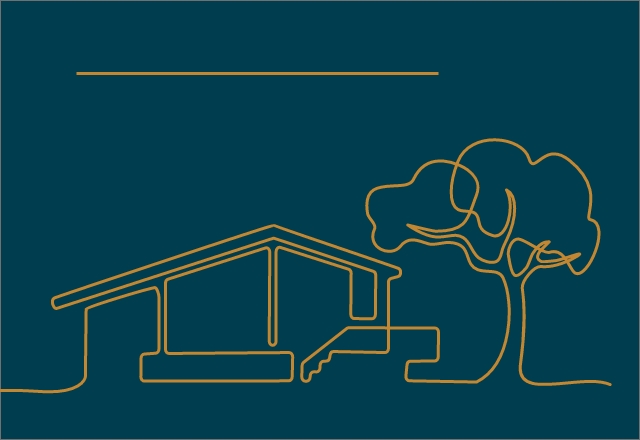Empathy driven engagement
Empathy and emotion driven engagement assumes greater significance given the current crisis. Banks should focus on livelihood based financing and offerings targeted to the vulnerable and impacted segments of the society. They should go beyond traditional financing of SMEs and focus on helping enterprises resume business, survive the impact and grow.
Like many industries today, the financial services industry has gone through multiple changes over the last few years. As technology advances, and more businesses adopt customer centric thinking in how they design, build, and deliver their products and services, the ways in which we do business in finance have changed.
These changes coupled with the impact of COVID-19 mean that businesses need to do more to survive and grow, not just for themselves, but also for the customers they serve. This requires companies to go beyond their traditional ways of doing business, and adopt new ways of thinking about their business and customers.
From service provider to trusted partner in financial journey
By adopting empathy driven design, companies can innovate to discover new ways to serve the needs of customers and be top of mind in critical moments in the customer’s lifecycle.
From standardised service to differentiated experience
Moving to an empathy driven approach provides opportunities for companies to move into new markets, grow customer loyalty, form new revenue streams, and provide differentiated experiences.
Because vulnerable and impacted segments of society are often considered loss-making, limiting these segments' ability to save money and build wealth, banks tend not to put a lot of focus on their experience. However, this untapped market represents a huge opportunity for financial institutions willing to think innovatively about their business.
The banking system is generally not designed with low-income segments in mind; many checking accounts are by default not financially beneficial to customers, with high monthly fees, transaction fees, ATM fees, and of course overdraft fees. These fees, while inconsequential to middle class customers, are a barrier of entry for low income and vulnerable market segments.
Financial hurdles like proof of regular income or high minimum deposits for loans make it difficult for those who live paycheck to paycheck, or don’t have stable income, to consider banks as their go to financial option.
As a result many potential banking customers turn to alternative financial services (AFS), which although generally riskier, become the only financially viable option for them. This barrier to entry and mistreatment of low-income individuals can also lead to a breakdown in trust and reputation for the bank.
Despite this, banks already offer many services and products that if implemented correctly could help these vulnerable groups build wealth. Until they make a conscious decision to change, AFS’s like check cashing outlets, payday lenders, and pawn shops will continue to draw these customers in.
If we shift our mindset to be empathy driven we will uncover that customers seeking alternative financial services highlights that there are needs of the customer that banks currently don't serve. These unmet needs spell opportunity for banks to grow.


This crisis has highlighted further the need for banks to fill the gaps between their current offerings and what these underserved markets need. Now more than ever, there are additional opportunities for banks to provide flexible and innovative product offerings to these market segments, which have faced the largest economic and financial impact.
What’s more, with the increasing shift to digital, more and more banks are looking at ways to reduce costs and move more of their services to digital platforms. This has resulted in a large reduction in the number of physical branches and relationship managers (RMs) that banks employ to serve their customers.
This reduction in physical branches and RMs disproportionately affects these more vulnerable customers, as the branches that are closed are likely to be in low traffic, or rural areas (as opposed to busy city centers) where these segments are more heavily concentrated furthering the relationship gap between them and banks.
To close this widening gap in the digital age, building trust should be a key priority for financial institutions. Trust comes from understanding and showing empathy through the product and services they offer. We believe banks should focus on four key areas when looking to understand their customers across key life moments.
Life moments of a customer
- Physical Where employees and customers trust that physical spaces and interactions through branches, ATM and cash are safe, secure and sanitized.
- Digital Where customers are assured of the highest levels of security and data privacy.
- Emotional Where banks operate with high levels of empathy, ethics and contribute back to society.
- Rational Where customers and employees alike trust in the bank’s ability to address needs and expectations - financial and otherwise.
Organisations that show empathy to their existing customers and aim to build products and services around their livelihoods durings times of crisis are much more likely to build long term relationships. This increased trust and positive perspective of them will help them maintain and grow their business despite the uncertainty COVID-19 has caused.
The best way to start engaging with your existing and potential customers is to take an empathetic driven approach to interacting with them throughout key moments in their lives. This includes looking at expanding the types of products and services offered by analysing their currently unmet needs at each of these key moments through the lenses outlined above.

Starting work
Starting work for the first time is one of the most important times in a person’s life, and of course their financial journey, as it’s generally the time they will open their first bank account.
- How might banks meet customers at this point in their journey to ensure trust and security for a customer's financial privacy?
- How might banks ensure they are empathizing with vulnerable communities at this point and provide relevant products?

Buying a car
Buying a car is a large financial investment and and important life step for many people. It’s a key moment where a customer's joy and success can be associated with the FS provider that helps them achieve it.
- How can financial services companies ensure they are providing the right types of loans, and financial products for underserved segments at this moment?
- How can FS meet their customers at the physical locations where customers might be making this decision?

Getting married
Getting married can also provide an important opportunity for FS providers to engage with their customers. This important life moment leads to significant financial planning, and changes that banks can provide support for.
- How can banks provide rational support to those who are looking at getting married in the form of marriage loans, joint accounts, etc?
- How might FS providers ensure that they have the right people to provide consultation to people looking at their marriage options in the right places?

Buying a house
Buying a home requires significant financial support, and banks who provide the right support and financial products to their customers can build trust with customers through the important life moment.
- How can banks provide financial security and support to first home buyers to ensure they feel confident in their purchase?
- How can FS providers ensure they have the right rational products for first home buyers, especially for those who may come from lower-income segments.
There are a variety of examples of products in the market that aim to better serve these vulnerable customer segments, from simple things like zero fee checking accounts, and lower overdraft fees, to more complex scenarios like providing fee incentives for sharing on social media or referring friends.
Indonesia’s RPI (Bank Rakyat Indonesia) Bank, a leader in microfinancing in South East Asia, set up it’s microbanking division to service rural and low-income demographics to major success. Offering carefully crafted microsavings and microcredit products to low-income people at market interest rates, BRI was able to turn a traditional loss segment into its highest profit driver.
ICICI Bank in India has also started focusing more on underserved segments in the market, and recently partnered with IIFL Home Finance to provide affordable housing and MSME (Micro, Small, Medium Enterprise) loans. They also launched their EMI (Equated Monthly Installments) product on it’s internet banking platform, allowing the flexibility for customers to make large payments up front with the funds withdrawn slowly over a monthly basis instead of all at once.
In many emerging markets, correspondent banking has also taken off, allowing larger Banks to partner with smaller trusted nonbank retail outlets to provide financial services in physical locations they may not otherwise be present in. This approach allows banks to reach a larger audience without adding additional costs of physical locations, while giving customers added benefits of shopping at their regular stores.
In more recent terms, some companies have even rolled out new products or policies in reaction to COVID-19. Lending Club, for example, has added new hardship plans and waived late fees, for their customers affected, while others allowed customers to pause their insurance policies during the crisis.
Empathy driven engagement requires more than just providing innovative financial products though, we must think about their overall experience with the services offered. This includes efforts to help build their financial understanding and capability, like providing financial education and saving tips, or simply alerting customers on their spending habits.
The Vietnam Bank of Social Development (VBSP) for example, was created purely to serve low-income, and marginalised groups by providing a range of services fit for these groups, including building their customers digital capability, and gradually onboarding them using simple digital interactions like notifications to pay bills, and customer support via SMS.
By applying customer empathy in developing products and services that meet the unmet needs of these low-income or vulnerable markets, banks can increase their potential market share by acquiring new customers that are currently going elsewhere for their financial services needs. By actually helping build customers' wealth to benefit them in the long term, customers are also more likely to stick around with you in the long term.


The Three Lenses of Innovation: our goal is to create something that is valuable (desirable), feasible, and viable. We do this by espousing empathy and trust within our team and with the communities we serve.
There are many things you can do as a business to build empathy in your organisation. These all help in becoming more customer centric when developing financial products and services to capture underserved and underbanked customers. By applying empathy driven design in your organisation you too can uncover new opportunities to serve your customers, survive the impact of this economic crisis and grow your business long term.
More content delivered to your inbox
Stay up-to-date with our latest business and industry insights.


















